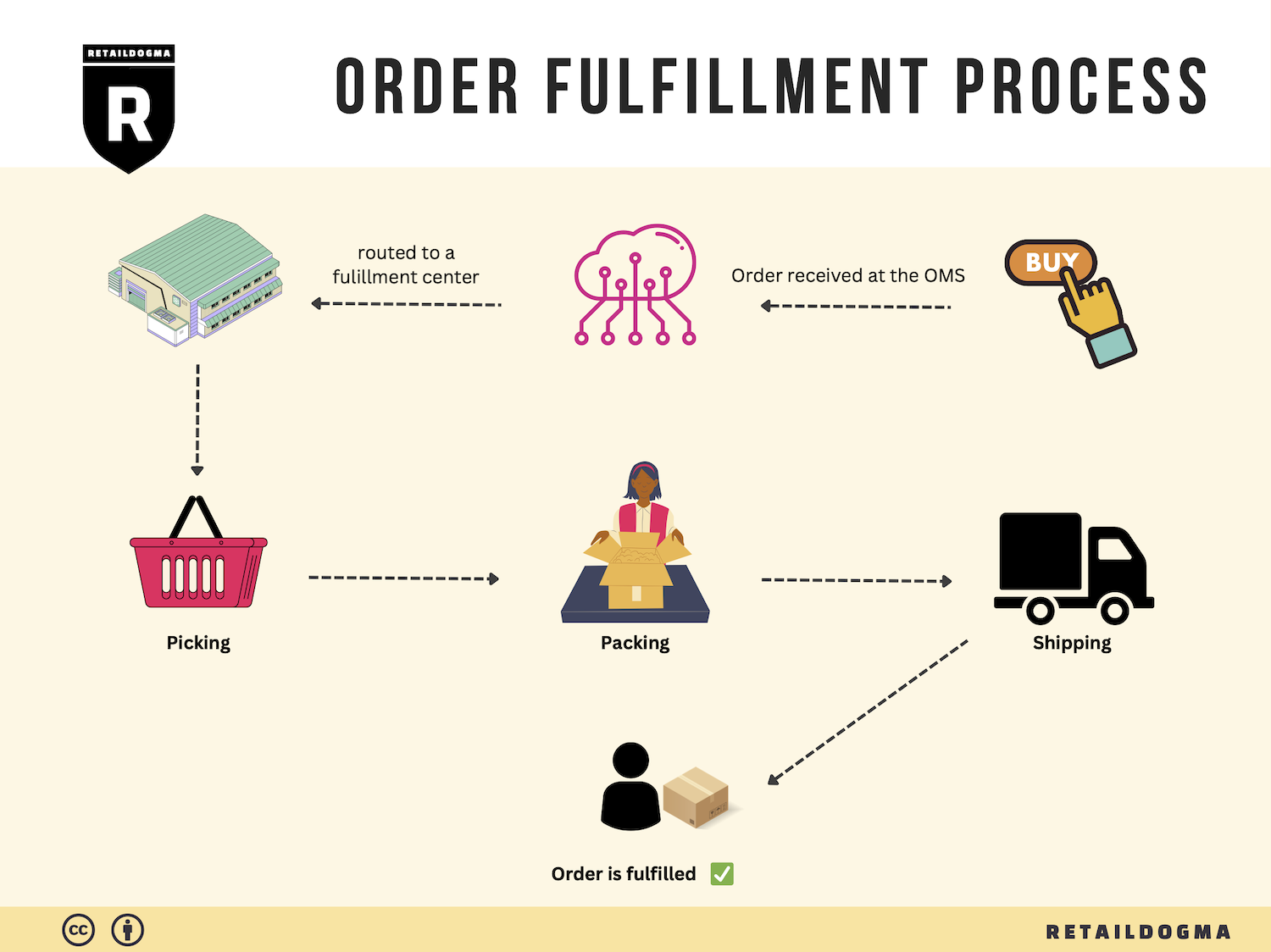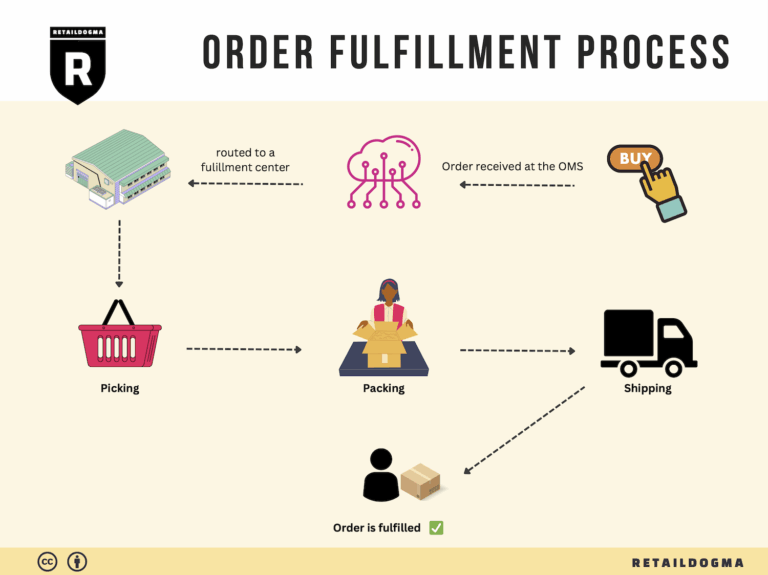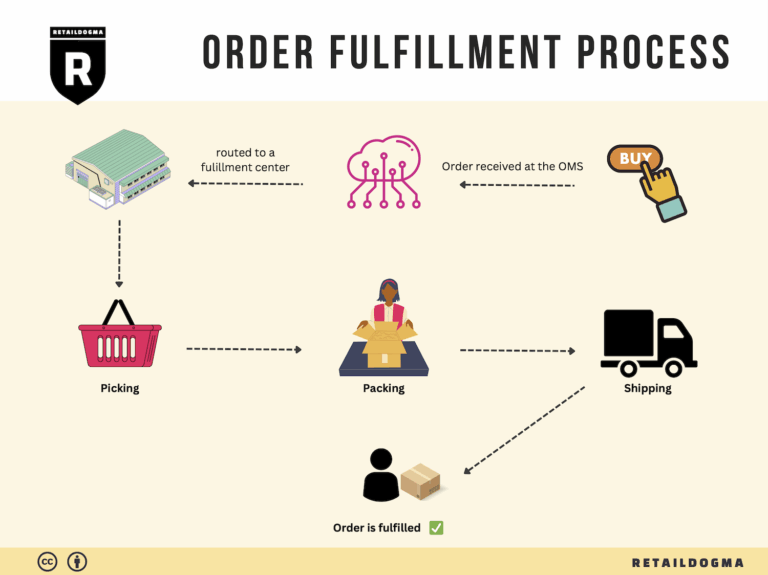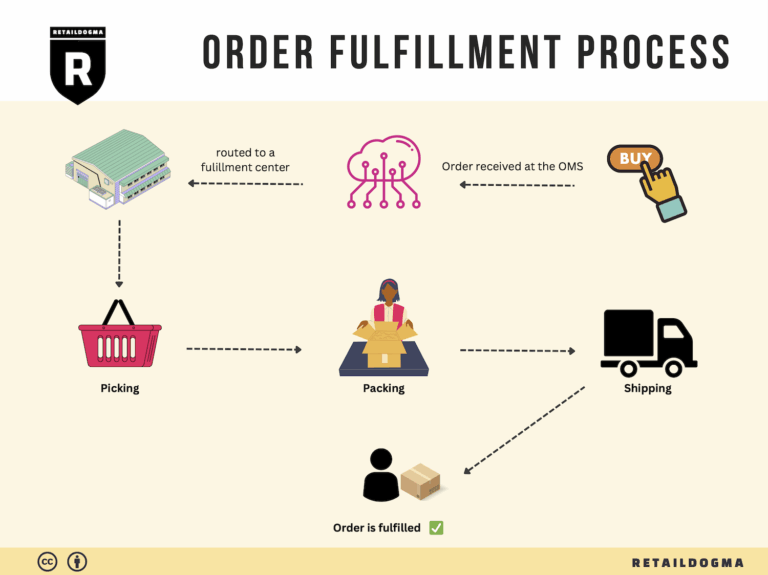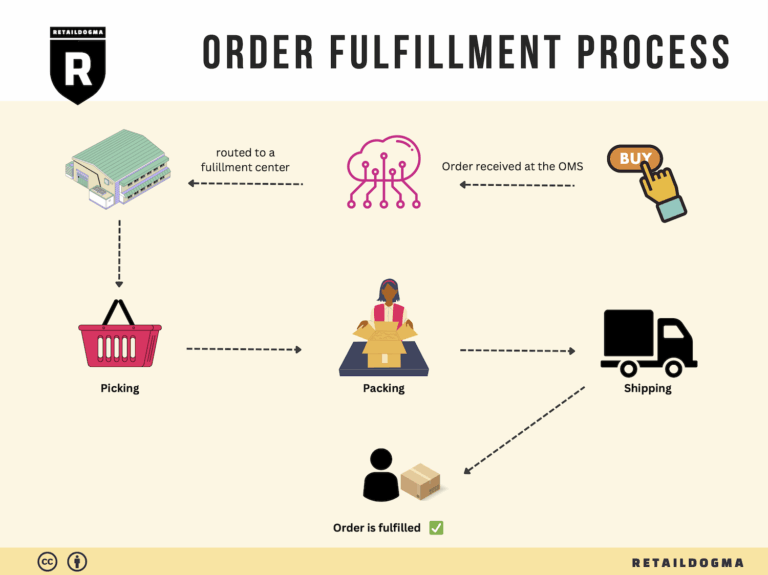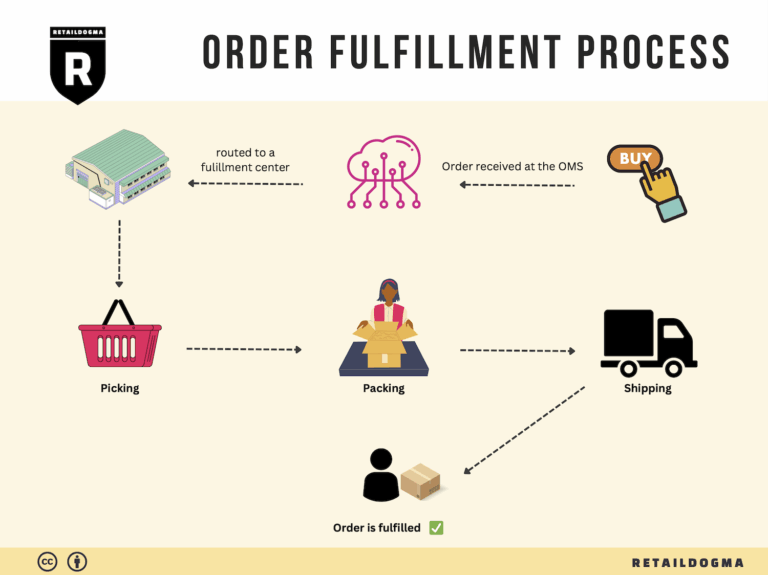What Is A Fulfillment Center? A Complete Guide (2025)
What is E-commerce Fulfillment? An Introduction for Growing Businesses
Understanding E-commerce Fulfillment
As an e-commerce business owner, you may find yourself grappling with the overwhelming task of packing and shipping orders, especially as your sales begin to grow. The excitement of increased sales can quickly turn into frustration if your logistics aren’t aligned with your business objectives. This is where e-commerce fulfillment comes into play—a crucial aspect of your operations that can make or break your customer satisfaction.
Simply put, fulfillment is the process of getting a product into the hands of your customers. It encompasses everything from receiving inventory, storing products, picking and packing orders, to shipping them out. As you scale your operations, the complexity of this process can increase significantly. Many growing businesses face challenges such as managing inventory levels, ensuring timely shipping, and maintaining quality control, which can detract from focusing on core business activities like marketing and product development.
In this guide, we will explore the different models of e-commerce fulfillment that can support your business. You’ll learn about options such as Third-Party Logistics (3PL) and Fulfillment by Amazon (FBA), which can provide scalable solutions tailored to your specific needs. We will also delve into the core services that these fulfillment models offer, including inventory management, order processing, and customer service.
Choosing the right fulfillment partner is essential for your growth. This guide will help you navigate the criteria to consider when selecting a partner, including their technology capabilities, service levels, and geographical reach. Additionally, we will discuss pricing structures, helping you understand the costs associated with different fulfillment options, and how to evaluate them against your budget and operational goals.
Our goal is to empower you with the knowledge to make informed decisions about your logistics. With the right fulfillment strategy in place, you can streamline operations, enhance customer satisfaction, and ultimately drive sales growth. Whether you’re just starting out or looking to optimize an existing setup, this guide will serve as a practical resource for navigating the complexities of e-commerce fulfillment.
What You’ll Learn In This Guide
- What is E-commerce Fulfillment? An Introduction for Growing Businesses
- The Order Fulfillment Process: From ‘Buy’ Button to Customer’s Door
- Comparing Fulfillment Models: In-House vs. 3PL vs. Dropshipping
- A Deep Dive into Amazon FBA: Pros, Cons, and Who It’s For
- Core Services Offered by Fulfillment Centers
- How to Choose a Fulfillment Partner: A 6-Point Checklist
- Understanding Fulfillment Pricing: A Breakdown of Common Fees
- Frequently Asked Questions (FAQs) about Fulfillment
- Conclusion: Is Outsourcing Fulfillment the Right Move for Your Business?
- Important Disclaimer
The Order Fulfillment Process: From ‘Buy’ Button to Customer’s Door
1. Receiving Inventory
The first step in the order fulfillment process is receiving inventory. This involves the acceptance of goods into the fulfillment center, where items are logged into the system. Each product is assigned a Stock Keeping Unit (SKU), a unique identifier that streamlines tracking and management.
This step is crucial for several reasons. It ensures that the inventory levels are accurately recorded, which is essential for maintaining optimal stock levels and avoiding stockouts or overstock situations. Proper inventory management at this stage lays the groundwork for efficient operations downstream.
Key Term: SKU – A unique identifier for each product that simplifies inventory tracking and management.
2. Warehouse Storage
Once the inventory is received and recorded, it is placed into the storage area of the fulfillment center. Effective warehouse storage involves strategically organizing products in a way that maximizes space and minimizes retrieval time. Products may be stored in various configurations, such as shelving units or pallet racks, depending on their size and demand.
This step is important because the organization of the warehouse can significantly impact the efficiency of order processing. For example, high-demand items should be stored closer to the packing area to reduce the time taken to pick them. An effective storage strategy can lead to faster order fulfillment, improved accuracy, and reduced operational costs.
Key Term: ABC Analysis – A method of categorizing inventory based on its importance and sales volume, which helps in determining storage locations.
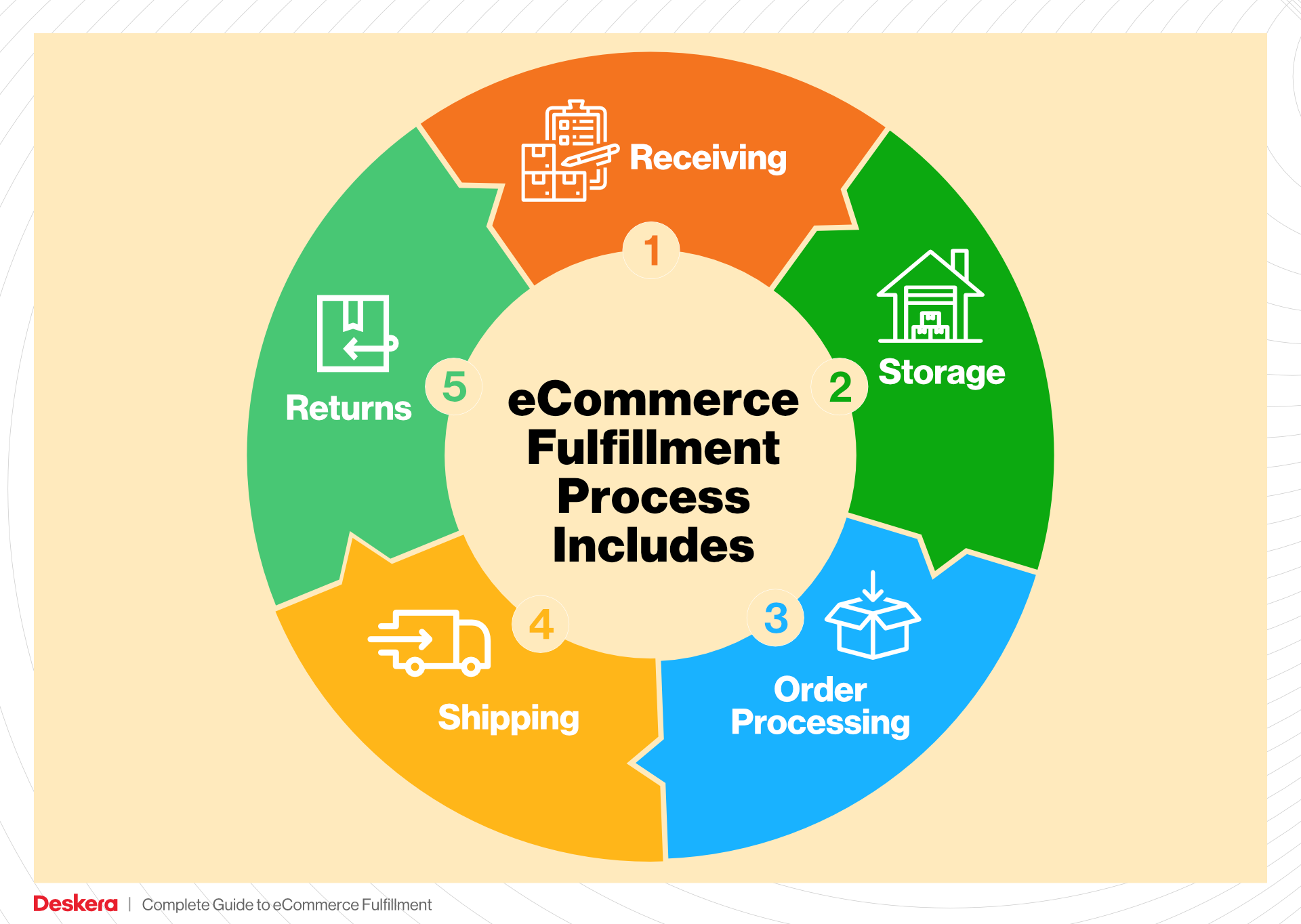
3. Order Picking
Order picking is the process of retrieving items from storage to fulfill customer orders. When a customer places an order, the fulfillment system generates a pick list, which details the items and their locations within the warehouse. Warehouse staff, often referred to as pickers, use this list to gather the required products.
This step is pivotal because it directly affects the speed and accuracy of order fulfillment. Errors in picking can lead to customer dissatisfaction and increased return rates. Utilizing technology, such as barcode scanners and automated picking systems, can enhance accuracy and efficiency during this stage.
Key Term: Pick List – A document that specifies the items to be collected from the warehouse for a specific order.
4. Order Packing
After items have been picked, the next step is order packing. This involves securely packaging the items to ensure they arrive at the customer’s location undamaged. Packing materials such as boxes, bubble wrap, and packing peanuts are used, and the order is often accompanied by packing slips that detail the contents.
The importance of this step cannot be overstated. Proper packing safeguards products during transit and minimizes the risk of damage, which can be costly for businesses. Additionally, effective packing can enhance customer satisfaction, as a well-packaged order reflects professionalism and care.
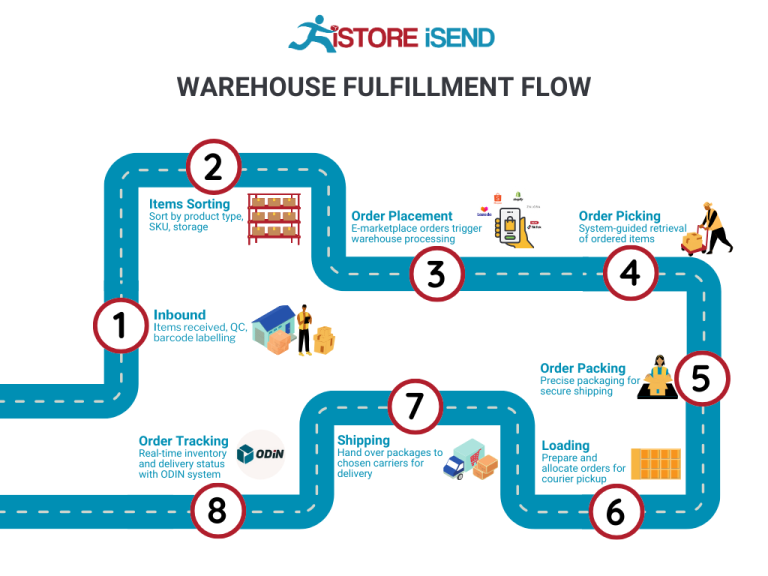
Key Term: Packing Slip – A document included with the shipment that lists the items packed, serving as a confirmation of what the customer should receive.
5. Shipping & Delivery
The final step in the order fulfillment process is shipping and delivery. Once packed, orders are labeled and handed off to shipping carriers for transportation. The choice of carrier, shipping method, and delivery timeframe are all critical considerations, as they can impact customer satisfaction and overall fulfillment costs.
This step is essential because it culminates the entire fulfillment process and determines how quickly and efficiently customers receive their orders. Businesses often track shipments in real-time, providing customers with updates on their order status. Effective shipping strategies can lead to improved customer loyalty and repeat business.
Key Term: Last-Mile Delivery – The final step in the delivery process where the package is transported from the distribution center to the customer’s doorstep, often considered the most critical part of the shipping process.
By understanding and optimizing each of these steps in the order fulfillment process, e-commerce businesses can enhance their operational efficiency, improve customer satisfaction, and ultimately scale their operations effectively.
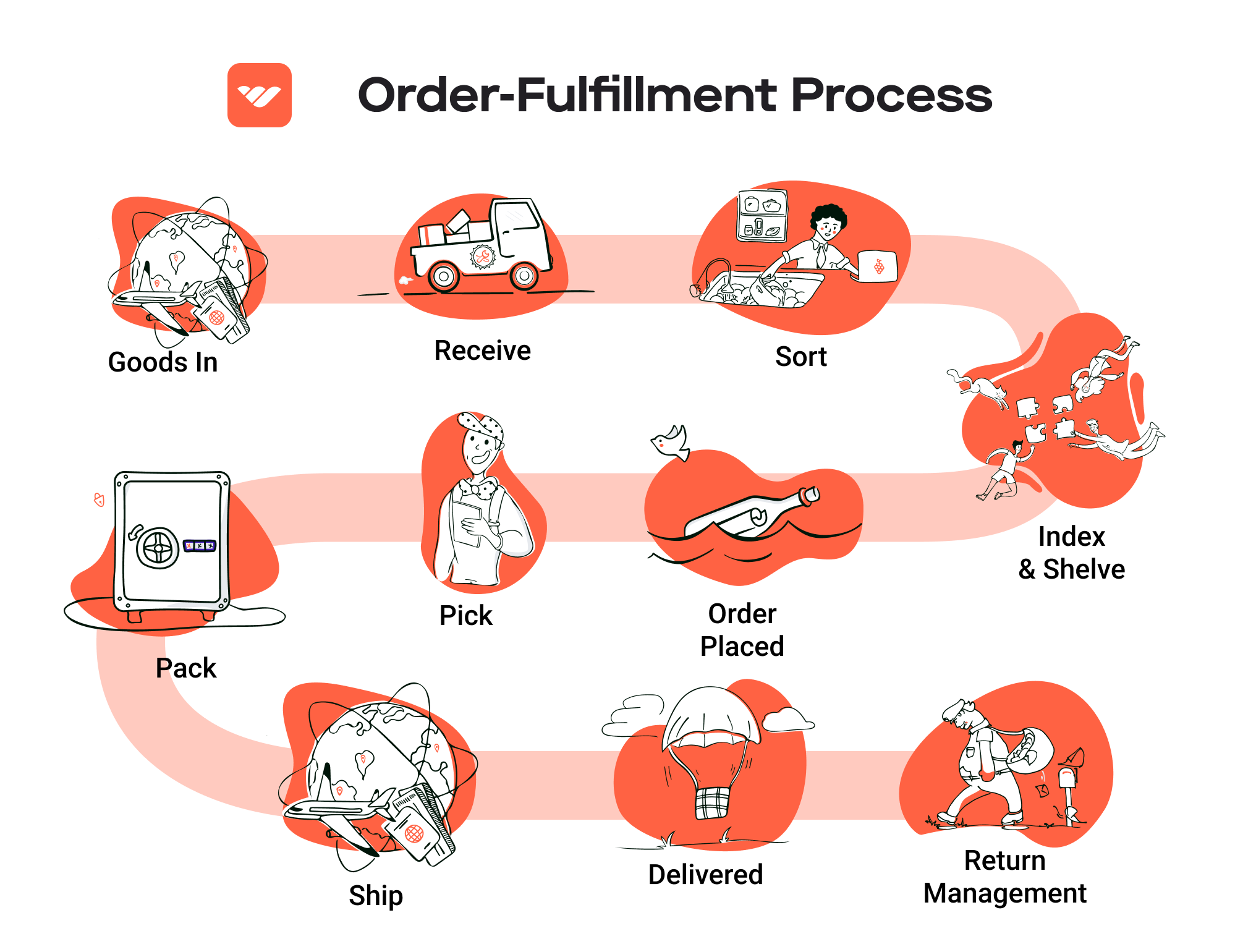
Comparing Fulfillment Models: In-House vs. 3PL vs. Dropshipping
Fulfillment Model Comparison Table
| Model | Who Handles Inventory | Best For (Business Stage) | Key Advantage | Key Disadvantage |
|---|---|---|---|---|
| In-House Fulfillment | The business itself | Startups to established brands | Complete control over inventory and processes | High overhead costs and operational complexity |
| Third-Party Logistics (3PL) | A third-party provider | Growing businesses | Scalability and reduced operational burden | Less control over inventory and processes |
| Dropshipping | Supplier or manufacturer | New entrepreneurs and small businesses | Low startup costs and minimal risk | Lower profit margins and reliance on suppliers |
In-House Fulfillment
In-house fulfillment involves managing the entire logistics process within your own business. This includes sourcing products, storing inventory, packing orders, and shipping them to customers. Businesses that choose this model maintain complete control over their inventory and fulfillment processes, allowing for a tailored customer experience. This model is particularly advantageous for established brands that have the resources to invest in warehousing, staffing, and logistics technology. However, the downside is significant; it entails high overhead costs, including rent for warehouse space, employee wages, and the expense of fulfillment technology. Additionally, businesses must be prepared to handle the complexities of inventory management, shipping logistics, and customer service, which can divert focus from core business strategies.
Third-Party Logistics (3PL)
Third-party logistics (3PL) providers offer a middle ground between in-house fulfillment and dropshipping. In this model, businesses outsource their logistics operations to specialized providers who handle warehousing, inventory management, packing, and shipping. This is an excellent option for growing businesses that need to scale without the burdens of managing logistics in-house. The key advantage of using a 3PL is the ability to leverage their expertise and resources, which can lead to faster shipping times and improved customer satisfaction. Additionally, 3PLs often have established relationships with carriers, potentially resulting in lower shipping costs. However, there is a trade-off; businesses may have less control over their inventory and fulfillment processes, which can lead to challenges in quality assurance and customer service.
Dropshipping
Dropshipping is a fulfillment model where the retailer does not keep products in stock. Instead, when a customer places an order, the retailer purchases the item from a third-party supplier, who then ships it directly to the customer. This model is particularly appealing for new entrepreneurs and small businesses as it requires minimal startup costs and eliminates the need for inventory management and warehousing. Businesses can offer a wide range of products without the financial risk associated with unsold inventory. However, dropshipping comes with its own set of challenges. Profit margins can be lower compared to other models since retailers often have to pay wholesale prices that leave little room for markup. Additionally, reliance on suppliers can lead to issues with product quality, shipping times, and stock availability, which can ultimately impact customer satisfaction.
Conclusion
Choosing the right fulfillment model is critical for the success of an e-commerce business. Each model—In-House Fulfillment, Third-Party Logistics, and Dropshipping—has its own set of advantages and disadvantages that should be carefully considered based on the business’s current stage and long-term goals. While in-house fulfillment offers control and flexibility, it demands significant resources. 3PL provides a scalable solution with reduced operational strain but comes with less control. Dropshipping offers a low-risk entry point but may result in lower profits and quality concerns. Business owners should evaluate their unique circumstances, including financial capacity, growth trajectory, and operational expertise, to determine the best fulfillment strategy that aligns with their objectives.
A Deep Dive into Amazon FBA: Pros, Cons, and Who It’s For
Understanding Fulfillment by Amazon (FBA)
Fulfillment by Amazon (FBA) is a service provided by Amazon that allows e-commerce sellers to store their products in Amazon’s fulfillment centers. Amazon then takes care of storage, packaging, shipping, and customer service for these products. This service can significantly streamline the logistics of running an online business, enabling sellers to focus on scaling their operations rather than managing the complexities of order fulfillment.
When a customer places an order for an FBA product, Amazon handles the entire fulfillment process. This includes picking the product from the warehouse, packing it, shipping it, and managing returns. Sellers benefit from Amazon’s extensive logistics network, which can lead to faster delivery times and improved customer satisfaction.
How FBA Works
-
Setup and Inventory: Sellers create an Amazon seller account and enroll in the FBA program. They then send their products to Amazon’s fulfillment centers, where the inventory is stored until sold.
-
Order Processing: Once a customer places an order, Amazon’s system automatically processes the order, selects the nearest fulfillment center, and prepares the item for shipment.
-
Shipping and Handling: Amazon handles the shipping process, offering various delivery options, including Prime two-day shipping, which enhances the attractiveness of the product to buyers.
-
Customer Service: Amazon also manages customer service inquiries, including returns and refunds, which reduces the seller’s operational burden.
-
Reporting and Analytics: Sellers can access detailed reports and analytics through their Amazon Seller Central account, allowing them to track inventory levels, sales performance, and customer feedback.
Pros of FBA
1. Prime Eligibility
One of the most significant advantages of using FBA is the ability to offer products with Amazon Prime eligibility. This means that Prime members can receive products with free two-day shipping, which can significantly boost sales. Prime customers are often more willing to purchase items that are eligible for Prime, leading to increased visibility and higher conversion rates.
2. Customer Trust
Products fulfilled by Amazon often come with a level of trust and credibility due to Amazon’s reputation for excellent customer service and reliable shipping. This trust can translate into higher sales, as customers are more likely to choose products that are backed by Amazon’s fulfillment services.
3. Multi-Channel Fulfillment
FBA is not limited to sales on Amazon alone. Sellers can use FBA to fulfill orders from their own websites or other sales channels, such as eBay or Shopify. This flexibility allows businesses to centralize their inventory management and shipping processes, simplifying logistics while reaching a broader audience.
4. Scalability
FBA allows sellers to scale their businesses without the need to invest in warehousing, staffing, or logistics. As sales increase, sellers can send more inventory to Amazon’s fulfillment centers, allowing them to keep up with demand without overextending their resources.
5. Simplified Returns
Amazon handles all aspects of returns for FBA products, streamlining the process for sellers. This ensures a hassle-free experience for customers, which can enhance customer loyalty and satisfaction.
Cons of FBA
1. High Fees
While FBA offers numerous benefits, it also comes with associated costs. Sellers must pay storage fees for their inventory and fulfillment fees per item sold. These fees can accumulate, especially for low-margin products or items that do not sell quickly, potentially eroding profits.
2. Strict Inventory Rules
Amazon imposes strict inventory management rules. Sellers must adhere to guidelines regarding inventory levels and product condition, which can be challenging for those with fluctuating demand. Failure to comply can result in additional fees or restrictions on selling privileges.
3. Commingling Risks
FBA products may be commingled, meaning that inventory from different sellers can be stored together in Amazon’s fulfillment centers. This can pose a risk if another seller’s product is defective or damaged, leading to potential returns that could affect your seller rating and customer satisfaction.
4. Limited Control Over Fulfillment
While Amazon takes care of fulfillment, this can also mean a loss of control over the customer experience. Sellers cannot dictate how their products are packaged or shipped, which may impact brand perception.
5. Dependency on Amazon
Using FBA means relying heavily on Amazon’s platform and policies. Changes in Amazon’s terms of service, fees, or algorithms can significantly impact a seller’s business, leading to a lack of stability.
Who is FBA Best For?
Fulfillment by Amazon is ideal for a variety of e-commerce business owners, particularly those who:
-
Are New to E-Commerce: FBA simplifies logistics, allowing new sellers to focus on marketing and product development without the complexities of fulfillment.
-
Have High Sales Volume: Businesses with high sales volume can benefit from FBA’s scalability and efficiency, maximizing their profit margins by leveraging Amazon’s logistics.
-
Sell Products with Fast Turnover: If you have products that sell quickly, the fees associated with FBA may be outweighed by the increased sales velocity and customer reach.
-
Want to Offer Prime Shipping: Brands looking to tap into the Prime customer base can significantly benefit from the visibility and sales boost that comes with FBA eligibility.
-
Are Looking for Multi-Channel Fulfillment Solutions: Sellers who operate on multiple platforms can streamline their operations by using FBA for all order fulfillment, making it easier to manage inventory and shipping.
In conclusion, while Fulfillment by Amazon offers numerous benefits that can help e-commerce businesses scale efficiently, it is essential to weigh these advantages against the potential drawbacks. Understanding your business model and customer needs will help determine if FBA is the right fit for you.
Core Services Offered by Fulfillment Centers
Inventory Management & Warehousing
Fulfillment centers provide robust inventory management and warehousing solutions that are essential for e-commerce businesses seeking to streamline their operations. This service involves the systematic tracking and storing of products in a dedicated space, ensuring that stock levels are optimized and readily available for order fulfillment.
What It Is: Inventory management at fulfillment centers involves sophisticated software systems that monitor stock levels, manage reorders, and track product movements within the warehouse. Warehousing services include secure storage of products in various conditions, accommodating different sizes and types of inventory.
Benefits to E-commerce Businesses:
– Efficiency: By utilizing a fulfillment center, businesses can benefit from professional storage solutions without the overhead costs associated with maintaining their own warehouse. This allows e-commerce companies to focus on their core competencies, such as marketing and product development.
– Scalability: As businesses grow, fulfillment centers can easily scale up their inventory storage and management capabilities, accommodating seasonal fluctuations and increasing demand without the need for significant capital investment.
– Real-Time Data Access: Advanced inventory management systems provide businesses with real-time insights into stock levels, helping them make informed decisions about purchasing and stocking strategies. This reduces the risk of stockouts and excess inventory, optimizing cash flow.
Pick and Pack Services
Pick and pack services are at the heart of fulfillment center operations, directly impacting how quickly and accurately orders are processed and shipped to customers.
What It Is: This service involves selecting (picking) the ordered items from the warehouse and preparing (packing) them for shipment. The fulfillment center uses technology and trained staff to ensure that the right products are picked and packaged according to the specific requirements of each order.
Benefits to E-commerce Businesses:
– Speed: Fulfillment centers are designed for efficiency, often employing advanced picking technologies that speed up the order fulfillment process. This enables businesses to provide faster shipping options, which can significantly enhance customer satisfaction and loyalty.
– Accuracy: With well-trained staff and automated systems, fulfillment centers can achieve high levels of accuracy in order fulfillment. This reduces the likelihood of returns due to incorrect orders, saving businesses money and enhancing their reputation.
– Customization: Many fulfillment centers offer tailored packing options, such as branded packaging or specific packing materials, allowing businesses to maintain their brand identity even during the shipping process.
Kitting and Assembly
Kitting and assembly services are crucial for e-commerce businesses that offer products requiring assembly or that want to sell bundled items.
What It Is: Kitting involves grouping multiple products together into a single package, while assembly refers to the process of putting together components to create a final product. Fulfillment centers can handle both processes, ensuring that products are ready for sale right out of the box.
Benefits to E-commerce Businesses:
– Enhanced Product Offerings: By offering kitted products or assembled items, businesses can create unique offerings that may appeal to customers looking for convenience or specific solutions. This can lead to increased sales and customer satisfaction.
– Reduced Time to Market: Outsourcing kitting and assembly to fulfillment centers allows businesses to reduce their time to market for new products, as these centers can handle the logistics of product preparation, freeing up internal resources for other critical tasks.
– Cost Efficiency: By leveraging the expertise of fulfillment centers, businesses can reduce labor costs associated with in-house assembly or kitting operations. This can lead to significant savings, especially for seasonal promotions or limited-time offers.
Returns Management (Reverse Logistics)
Returns management is an often-overlooked but essential service offered by fulfillment centers, especially in the e-commerce landscape where return rates can be high.
What It Is: Returns management, or reverse logistics, involves the process of handling returned items, including their inspection, restocking, refurbishment, or disposal. Fulfillment centers streamline this process to ensure that returns are processed efficiently and effectively.
Benefits to E-commerce Businesses:
– Customer Retention: A well-managed returns process can significantly enhance customer satisfaction. By ensuring that returns are easy and hassle-free, businesses can foster loyalty, encouraging repeat purchases.
– Cost Management: Efficient returns management can minimize losses associated with returned products. Fulfillment centers can assess the condition of returned items and decide on the best course of action—whether to restock, refurbish, or recycle—thereby maximizing the value recovered from returned goods.
– Data Insights: Returns management processes can provide valuable insights into customer behavior and product performance. Analyzing return reasons can help businesses identify potential issues with products, allowing for improvements in quality and customer satisfaction.
In conclusion, partnering with a fulfillment center offers e-commerce businesses a strategic advantage in managing inventory, streamlining operations, and enhancing customer experiences. By leveraging these core services, businesses can scale efficiently and compete effectively in the dynamic e-commerce landscape.
How to Choose a Fulfillment Partner: A 6-Point Checklist
Location & Warehouse Network
Importance: The location of your fulfillment partner’s warehouses is critical for ensuring timely and cost-effective delivery. A partner with strategically placed facilities can significantly reduce shipping times and costs, which is essential in today’s fast-paced e-commerce environment.
Questions to Ask:
1. Where are your warehouses located, and how do they align with my customer base?
2. What is the average shipping time from your facility to major regions I serve?
3. Do you have multiple locations to cover different geographic areas effectively?
4. How do you handle shipping logistics during peak seasons or unexpected spikes in demand?
Technology & Integrations
Importance: The technology used by your fulfillment partner can streamline operations, improve order accuracy, and enhance customer experience. A partner that offers robust technology platforms and integrations with your existing systems can save time and reduce errors.
Questions to Ask:
1. What fulfillment management software do you use, and how does it integrate with my e-commerce platform (e.g., Amazon, Shopify)?
2. Can you provide real-time tracking for shipments, and how is this communicated to both me and my customers?
3. How do you handle inventory management, and what reporting tools do you offer?
4. Are your systems scalable to accommodate future growth or changes in my business model?
Specializations (e.g., cold storage, oversized items)
Importance: Depending on your product types, you may require specialized services such as temperature-controlled storage for perishables or handling oversized items. A partner with the right capabilities can ensure your products are stored and delivered properly.
Questions to Ask:
1. What types of products do you specialize in handling?
2. Do you have the capability to store items that require specific conditions, such as cold storage or fragile items?
3. How do you manage inventory for specialized products, and what precautions do you take to ensure product integrity?
4. Can you accommodate unique packaging or shipping requirements for my products?
Scalability & Capacity
Importance: As your business grows, your fulfillment partner must be able to scale operations accordingly. A partner with sufficient capacity can handle increased order volumes without compromising service quality.
Questions to Ask:
1. What is your current capacity, and how quickly can you scale to meet increased demand?
2. How do you manage fluctuations in order volume, especially during peak seasons?
3. Are there any limitations on the types of products or order quantities you can handle?
4. Can you provide examples of how you have successfully scaled for other clients?
Pricing and Contracts
Importance: Understanding pricing structures and contract terms is essential for maintaining profitability. Transparent pricing models can help you avoid unexpected costs and ensure that you can budget effectively.
Questions to Ask:
1. Can you provide a detailed breakdown of your pricing structure, including storage fees, pick and pack fees, and shipping costs?
2. Are there minimum order requirements or volume discounts available?
3. What are the terms of the contract, and what happens if I need to terminate or modify our agreement?
4. Are there any hidden fees or additional costs that I should be aware of?
Customer Support & Reviews
Importance: Strong customer support is crucial for addressing issues promptly and maintaining smooth operations. A partner with a good reputation for customer service can enhance your business’s reliability and customer satisfaction.
Questions to Ask:
1. What level of customer support do you provide, and how can I reach your support team?
2. Can you share testimonials or case studies from other clients in my industry?
3. How do you handle disputes or issues related to order fulfillment?
4. What is your policy for handling damaged or lost items during shipping?
Choosing the right fulfillment partner is a pivotal decision that can influence your e-commerce success. By carefully evaluating potential partners against this checklist, you can ensure that you select a provider capable of meeting your operational needs and supporting your business growth effectively. Remember that a strong partnership can lead to improved customer satisfaction, operational efficiencies, and ultimately, greater sales.
Understanding Fulfillment Pricing: A Breakdown of Common Fees
Initial Setup Fees
Initial setup fees are often the first costs incurred when partnering with a fulfillment center. These fees cover the establishment of your account and the integration of your e-commerce platform with the fulfillment provider’s system. The setup process typically involves configuring your inventory management system, establishing shipping preferences, and training on how to use the fulfillment portal.
The cost can vary significantly based on the complexity of your operations and the fulfillment center’s policies. For instance, some fulfillment centers may charge a flat fee ranging from $100 to $500, while others may have tiered pricing based on the number of products or complexity of integrations. It’s essential to ask for a detailed breakdown of what the setup includes to avoid unexpected charges down the line.
Receiving Fees
Receiving fees are charged when your products are delivered to the fulfillment center. This fee compensates the center for unloading, inspecting, and storing your inventory. Typically, these fees are calculated on a per-pallet or per-carton basis, reflecting the amount of labor and handling required to process your incoming goods.
The fee structure may differ depending on the type of items received; for example, bulky or heavy items might incur higher fees. On average, receiving fees can range from $20 to $50 per pallet, but it’s advisable to check with your fulfillment partner to understand their specific pricing model. Additionally, be aware of any potential additional costs for items that require special handling or inspection.
Storage Fees (per pallet/bin)
Storage fees are incurred for the space your inventory occupies within the fulfillment center. These fees are typically charged on a monthly basis and can be calculated per pallet, bin, or cubic foot. The storage cost often varies based on factors such as the geographic location of the fulfillment center, the size and weight of the items, and the seasonality of your inventory.
In Fort Worth, Texas, where Amazon and other fulfillment centers operate, storage fees can range from $10 to $25 per pallet per month, depending on the provider. Additionally, it’s important to inquire about potential long-term storage fees, which may apply if your inventory remains unsold for an extended period. Keeping a close eye on your inventory turnover can help you manage these costs effectively.
Pick & Pack Fees (per item/order)
Pick and pack fees are charged each time an order is processed, which includes selecting the items from the warehouse and packing them for shipment. These fees can be structured as a flat fee per order or on a per-item basis. The pricing may also depend on the complexity of the order; for example, orders that require special packaging or include multiple items might incur higher fees.
Typically, pick and pack fees can range from $1 to $5 per order, plus an additional $0.25 to $1 per item. Understanding how your fulfillment center structures these fees can help you forecast shipping costs accurately and identify opportunities for cost savings, such as optimizing your product assortment or order sizes.
Shipping Fees
Shipping fees are a significant component of fulfillment costs and are charged based on the shipping method chosen, the destination of the package, and the weight and dimensions of the items being shipped. Many fulfillment centers negotiate bulk shipping rates with carriers, which can lead to reduced costs for their clients.
Shipping fees can vary widely; for example, standard ground shipping might cost anywhere from $5 to $15 for domestic orders, while expedited shipping options can increase that cost significantly. It’s crucial to understand the shipping options available and how they align with your customers’ expectations for delivery speed and cost. Additionally, you should inquire about any surcharges for oversized or heavy items, as these can impact your overall shipping expenses.
Tips for Getting an Accurate Quote
-
Provide Detailed Information: When requesting a quote, be as detailed as possible about your inventory, expected order volume, and shipping preferences. This information will help the fulfillment center provide a more accurate estimate.
-
Ask for a Breakdown: Request a detailed breakdown of all fees associated with fulfillment services. This transparency will help you understand the cost structure and avoid surprises later on.
-
Consider Seasonal Variations: Inquire about how fees might change during peak seasons, such as holidays. Many fulfillment centers have different pricing models during high-demand periods.
-
Evaluate Contract Terms: Review the terms of service carefully, focusing on cancellation policies, long-term storage fees, and any potential hidden costs.
-
Compare Multiple Providers: Don’t settle for the first quote you receive. Compare offers from different fulfillment centers to find the best fit for your business needs, considering both price and service quality.
By understanding these common fulfillment fees and how they are calculated, e-commerce business owners can make informed decisions that enhance their operational efficiency and profitability.
Frequently Asked Questions (FAQs) about Fulfillment
1. What is an Amazon Fulfillment Center?
An Amazon Fulfillment Center is a large-scale warehouse where Amazon stores, picks, packs, and ships products directly to customers. These centers are integral to Amazon’s logistics network, ensuring quick and efficient delivery of items sold on the platform.
2. How does the fulfillment process work at Amazon’s Fort Worth center?
The fulfillment process at Amazon’s Fort Worth centers involves receiving inventory from sellers, storing products in organized shelving, picking items as orders come in, packing them for shipment, and finally shipping them to customers. This streamlined process is designed to minimize delivery times and enhance customer satisfaction.
3. What is the difference between a warehouse and a fulfillment center?
While both warehouses and fulfillment centers store products, their primary functions differ. A warehouse typically focuses on long-term storage of goods, whereas a fulfillment center is designed for efficient order processing and shipping, often involving more complex logistics operations to meet customer demand quickly.
4. How much do fulfillment services cost?
The cost of fulfillment services can vary widely based on factors such as order volume, the complexity of inventory, and specific service requirements. Generally, fees may include storage fees, picking and packing fees, shipping costs, and additional charges for special services. It’s crucial for businesses to evaluate their specific needs and compare pricing among different fulfillment providers.
5. What types of products can be stored at the Amazon Fulfillment Center in Fort Worth?
The Amazon Fulfillment Center in Fort Worth can store a diverse range of products, including electronics, clothing, household items, and more. Specific guidelines may apply depending on the nature of the products, particularly for hazardous materials or temperature-sensitive items.
6. How does Amazon ensure timely delivery from its Fort Worth center?
Amazon utilizes advanced technology and data analytics to optimize inventory management and shipping routes. The Fort Worth fulfillment center is strategically located to facilitate quick access to major transportation networks, allowing for faster order processing and delivery to customers across the region.
7. What is a 3PL, and how does it relate to Amazon fulfillment?
A 3PL, or third-party logistics provider, is a company that offers outsourced logistics services to businesses. In relation to Amazon fulfillment, many sellers partner with 3PLs to handle storage, packing, and shipping, allowing them to focus on sales and marketing while leveraging the logistical expertise of the 3PL.
8. Can I track my inventory stored at the Amazon Fulfillment Center?
Yes, Amazon provides sellers with tools to track their inventory stored at fulfillment centers. Sellers can monitor stock levels, order status, and shipment tracking through their Amazon Seller Central account, ensuring transparency and control over their inventory.
9. What are the benefits of using an Amazon Fulfillment Center for my e-commerce business?
Using an Amazon Fulfillment Center offers several benefits, including access to Amazon’s extensive logistics network, faster shipping times, and improved customer satisfaction. It also allows sellers to scale their operations without the overhead costs associated with managing their own warehousing and fulfillment processes.
10. How do I get started with using the Amazon Fulfillment Center in Fort Worth?
To start using the Amazon Fulfillment Center in Fort Worth, you need to create an Amazon Seller account, list your products, and enroll in the Fulfillment by Amazon (FBA) program. Once enrolled, you can send your inventory to the Fort Worth center, where Amazon will handle the fulfillment process for your orders.
Conclusion: Is Outsourcing Fulfillment the Right Move for Your Business?
Evaluating the Benefits of Outsourcing Fulfillment
Outsourcing your fulfillment operations can be a game changer for e-commerce businesses looking to scale efficiently. By partnering with a dedicated fulfillment service, you can save valuable time and resources that would otherwise be spent on managing logistics. This allows you to focus on core business activities such as marketing, product development, and customer engagement.
One of the primary benefits of outsourcing fulfillment is scalability. As your business grows, so too does the complexity of your logistics. A reliable fulfillment partner can seamlessly accommodate fluctuations in order volume without the need for you to invest in additional infrastructure or labor. This flexibility is essential for managing peak seasons and unexpected surges in demand.
Additionally, leveraging the expertise of a fulfillment service can significantly enhance your operational efficiency. These providers often employ advanced technology and streamlined processes to ensure quick and accurate order processing. Their experience in handling diverse product types—from temperature-sensitive items to subscription boxes—means they are well-equipped to meet your specific needs.
However, it’s crucial to choose the right fulfillment partner to support your growth ambitions. Conduct thorough due diligence to evaluate potential partners based on their track record, service offerings, and alignment with your business goals.
Take Action for Your Business Growth
To determine if outsourcing fulfillment is the right move for your business, start by conducting an audit of your current shipping and logistics processes. Assess the challenges you face and consider whether a fulfillment partner could alleviate these pain points. This strategic evaluation will help you make informed decisions that align with your growth objectives. Don’t hesitate—taking this step could be the catalyst for your next phase of success in the e-commerce landscape.
Important Disclaimer
⚠️ Important Disclaimer
The information in this guide is for educational purposes. Fulfillment services, pricing, and platform features change frequently. Always conduct your own due diligence and consult with providers directly before making business decisions.
